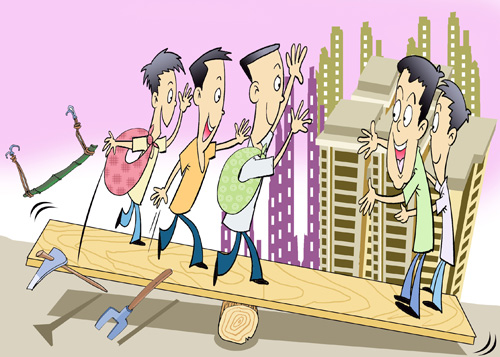China risks an urbanization 'Great Leap Forward'
The goal of urbanization is to create jobs and improving people's standard of living through economic development. This will inevitably result in a profound transformation of the social structure. Urbanization will only be fully realized when the big cities open up and accept the "new migrants," and develop prosperous city clusters and economic zones.

According to statistics from the National Development and Reform Commission (NDRC), the average annual increase in urbanization during the Eleventh Five-Year Plan period (from 2006 to 2010) was 0.9 percent. In 2009, the urban population reached 622 million, equivalent to an urbanization rate of 46.6 percent. It is certain to pass 50 percent during the twelfth five year plan, marking China's transition from a rural to an urban society.
As defined by development studies, urbanization means rural populations migrating into urban areas constantly and a radical transformation of the social structure. The mode of production changes from agriculture to socialized mass production. As a result, the new migrants' lifestyles, values, interpersonal relationships and social outlook also change.
In research I carried out on left-behind populations in rural areas, including children, women and elders, for the United Nations Development Programme's China Human Development Report, I found that China's urbanization was different from the norm, because in China only workers migrated to cities, not the whole population. Most migrants leave their dependents behind. And when the workers who migrate to the cities get old or encounter social or economic problems, their only recourse is to return home.
 0
0 






